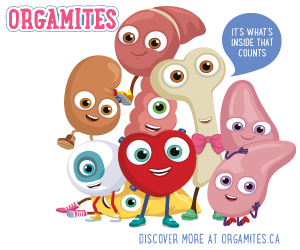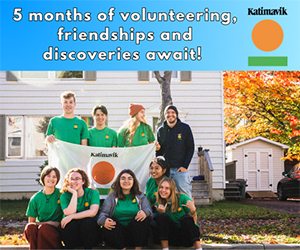They represent a segment of the population that probably experiences more misunderstanding than any other group in society. The most recent census shows that 1 in 300 people over the age of 15—close to 100,000 people—identify as being part of this group. They are Canada’s transgender and gender non-conforming (TGNC) population.
Where to begin
For many Canadians, a discussion of gender identity is fraught with confusion and bewilderment. Since most of the population does not feel compelled to entertain issues related to gender—having willingly and openly embraced that they are either the male or female sex—they cannot fathom how someone would feel differently. However, there is sizeable minority that is left questioning: What is my gender? Does gender exist? Where do I fit in? Is my gender different from the sex I was assigned at birth? Many young Canadians wind up in front of guidance counsellors across the country revealing the challenges they are having (or not having) with these questions.
People who ask the questions just mentioned often keep their inquiries and answers to themselves. Why? Because many people just don’t understand (or choose not to understand) their perspective. They don’t understand anything other than their binary existence—one that is male and female, masculine and feminine. They struggle to grasp the idea that some people reject the binary and embrace the non-binary.
Who are our TGNC youth?
Some know from a very early age that they are a gender other than the one assigned at birth. Others arrive at the same conclusion as they age. Still others realize that they do not subscribe to the idea of gender at all. There is no timeframe for when a person discovers they are transgender or gender non-conforming.
The data suggests that those who identify as TGNC from a young age should be encouraged to pursue and explore this sense or feeling. Determining that they are a gender other than the one assigned to them at birth is not some erroneous decision or phase. Instead, it is a deep sense of longing to be another gender or no gender at all. Parents are encouraged to probe and accept their child’s feelings—even if doing so is very uncomfortable. Some parents will seek the assistance of an advocacy group or licensed therapist—who is considered a gender specialist—to help the child and family navigate the transition. With the best interests of the child in mind, stakeholders can work together to see if, when the time comes, puberty blocking medication and hormones should be administered to help the child move to their desired gender.
If a person believes they are transgender deeper into puberty, similar encouragement and support should take place. However, since puberty has already begun in earnest, the medicinal options become more complicated (though not out of the question). Nonetheless, a social or behavioural transition can begin. The student can adopt a name and pronouns that suit their gender. They may alter their appearance and choose to express themselves as their desired gender. This can be a period of exploration to alleviate the potential emergence of gender dysphoria—a condition that presents as discomfort or distress brought on by gender questioning. Social transitioning and hormone therapy can prove helpful for many TGNC youth. Resistance to the transition by the family and school can contribute to the onset of gender dysphoria. While compassionate questioning is a part of the process, preventing or discouraging exploration does more harm than good.
At some point, whether a person has identified as transgender at a young age or later, a question may present itself: is gender affirmative surgery the next step? This is the most aggressive step in the transitioning process. Transgender people may elect to undergo ‘top surgery’ (the removal or building of breasts) or ‘bottom surgery’ (the altering of genitalia) to move to their desired gender.
Controversy
There are several elements of the transgender transition that have prompted controversy. First, those electing to transition from their birth sex are subject to a rigorous mental health evaluation. The rationale behind this process is to determine whether things like anxiety, depression or trauma are unduly influencing a person’s decision to transition. The controversy comes from transgender advocates worrying that the evaluation is mainstream society’s way of policing transgender and gender non-conforming affairs. However, those in favour of the process of mental health evaluation argue that changing genders is not something to be taken lightly given the fact that people transitioning will endure unjust judgement and discrimination within society, and often move toward dramatic medical procedures—including puberty blocking drugs, hormone therapy, and gender affirmative surgery (‘top surgery,’ and ‘bottom surgery’). The mental health evaluation argument is the one that holds the most weight with many gender clinics serving transgender patients today.
Another common source of controversy comes from the medical interventions involved in transitioning. What happens if someone takes puberty blocking drugs and hormones only to discover later that they wish to return to their birth sex? What happens if someone elects to have surgeries to switch sexes and later regrets that decision? The data suggests that very few transgender individuals—as low as one percent—regret their decision to transition and those who begin to detransition back to their birth sex usually do so prior to the gender affirmative surgery stage.
One controversial practice that is universally condemned is the idea of ‘reparative’ or ‘conversion’ therapy where misguided groups try to influence a person to not pursue their true gender. These practices are usually pursued by faith-based organization who are opposed to transgender rights. ‘Reparative’ and ‘conversion’ therapy has been blacklisted by Canada’s psychological, psychiatric, and medical communities. Any attempt to deny a person the opportunity to explore their gender is considered psychologically damaging and dangerous to the questioning person.
When a TNGC youth visits your office
Guidance counsellors have been encountering TNGC youth with more frequency over the past few years. Here are a few things to keep in mind if a TNGC youth trusts you enough to disclose their questioning:
- Acceptance is key – TNGC youth who feel they are accepted and encouraged are 70% more likely to report excellent physical and mental health.
- Know what the student is up against – 90% of TNGC youth report hearing transphobic comments on an ongoing basis with 23% hearing negative comments from teachers! Three quarters of TNGC students report beings harassed and feel unsafe at school.
- Honour their decision by using their name and pronouns – be especially conscious of names and pronouns when addressing the transitioning or questioning youth. This shows them you honour their decision and care enough to adapt your language to their situation.
- Refer transgender youth to Trans resources – discover the community resources that support those in transition. Connect transitioning youth with others at your school who are transitioning.
- Be patient – know that a transitioning youth is going through a questioning process. Give them space to learn and grow as they explore their gender identity.
- Be an advocate – help students feel less isolated by advocating for them—especially if they are victims of harassment. The statistics suggest that TGNC youth are likely to encounter taunts and bullying. A guidance counsellor can be the advocate that puts a stop to harassment early and firmly.
- Be aware – most students will simply want to explore and question their gender identity while in high school. Decisions to pursue medicinal options (puberty blocking medicine, hormones) will be made by parents and guardians in consultation with the youth and professionals. Very few parents or guardians will pursue surgical options for their child prior to the youth reaching the age of consent.
Adapted from the Central Toronto Youth Service’s Families in TRANSition document (https://ctys.org/wp-content/uploads/Families-in-TRANSition.pdf). pp 25-27.
Being more open to TGNC issues
Canadian society has become more open to examining TGNC issues. Schools have played a pivotal role in this process. The shift from a binary understanding of gender to a non-binary understanding is being explored by many—not just people in the TGNC community. This opens the door for young people to acknowledge their feelings and live a more enriching existence. The clear message that guidance counsellors can embrace is this: we are all one collective—living a united human existence—and it is our acceptance of one another that allows us to evolve together.
Understanding the terminology
There is a lexicon of language that has emerged as those identifying as TGNC has grown. As a part of the 2SLGBTQI+ community, TGNC Canadians are educating their neighbours on both the fact that gender identity can differ from person to person and that the language used when addressing someone is important.
For a comprehensive list of terminology, glossary and common acronyms, please visit the Government of Canada’s website: https://women-gender-equality.canada.ca/en/free-to-be-me/2slgbtqi-plus-glossary.html
By Sean Dolan










